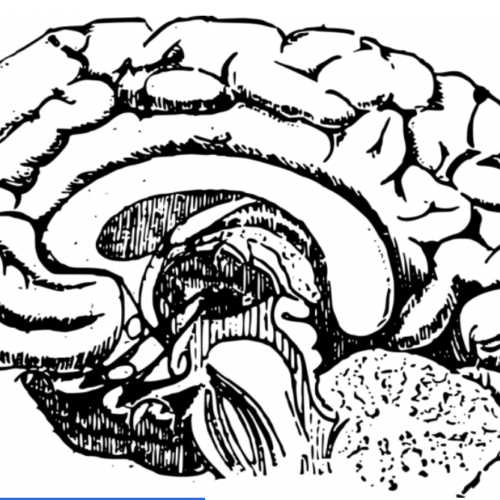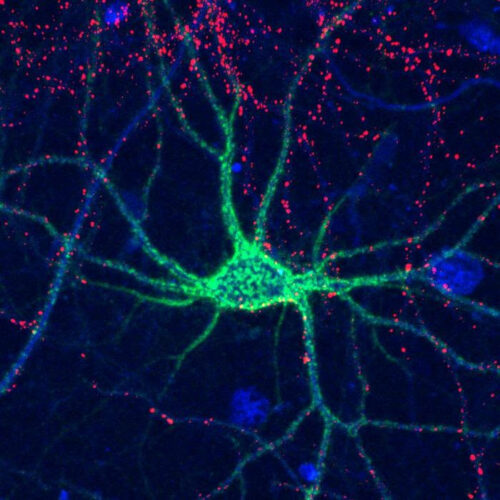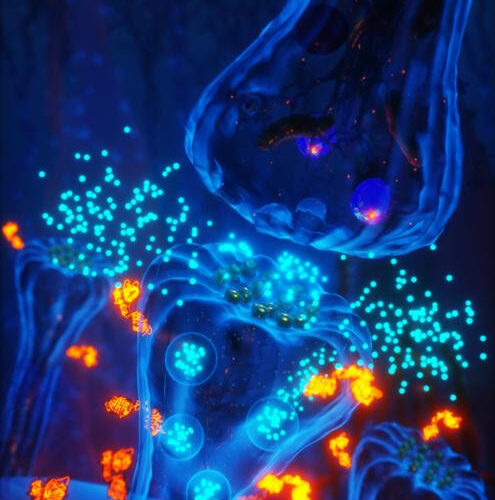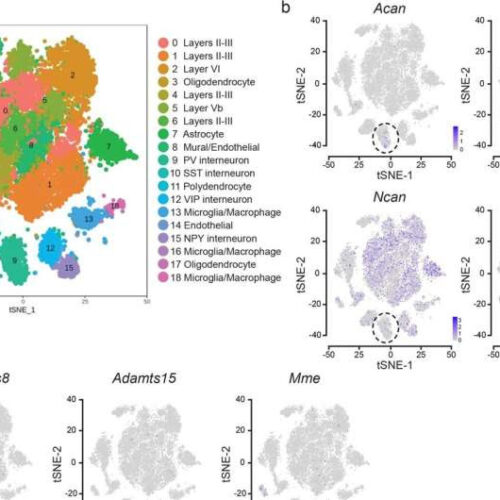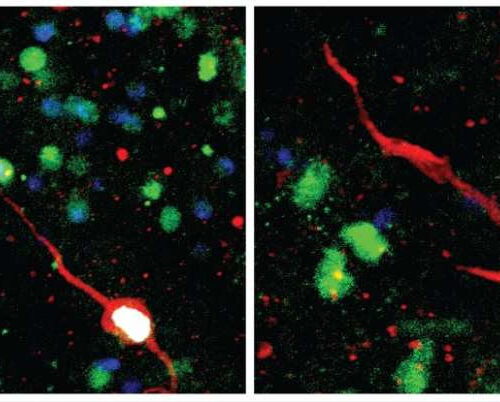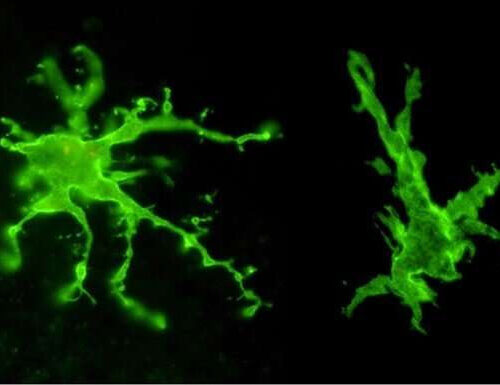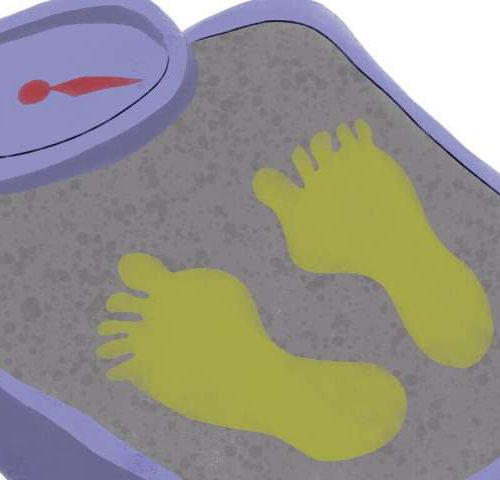July 31, 2024 by Georgetown University Medical Center Credit: CC0 Public DomainA study led by Georgetown University neuroscientists reveals that the part of the brain that receives and processes visual information in sighted people develops a unique connectivity pattern in people born blind. They say this pattern in the primary visual cortex is unique to...
Tag: <span>Brain plasticity</span>
Sugars affect brain ‘plasticity,’ helping with learning, memory, recovery
AMERICAN CHEMICAL SOCIETY IMAGE: COMPLEX SUGAR MOLECULES CONTROL THE FORMATION OF PERINEURONAL NETS (SHOWN HERE IN GREEN) THAT SURROUND NEURONS TO HELP STABILIZE CONNECTIONS IN THE BRAIN. CREDIT: LINDA HSIEH-WILSON’S LAB SAN FRANCISCO, Aug. 16, 2023 — Can you recognize someone you haven’t seen in years, but forget what you had for breakfast yesterday? Our...
Insulin-like hormones critical for brain plasticity
MAX PLANCK FLORIDA INSTITUTE FOR NEUROSCIENCE IMAGE: INSULIN-LIKE GROWTH FACTORS (IGF1/IGF2-CYAN SPHERES) ARE RELEASED FROM THE POSTSYNAPTIC COMPARTMENT OF A SYNAPSE DURING PLASTICITY. TO UNDERSTAND HOW IGF1 AND IGF2 PROMOTE MEMORY FORMATION, TU ET AL. DEVELOPED A BIOSENSOR TO DETECT THE ACTIVITY OF THE IGF1-RECEPTOR DURING SYNAPTIC PLASTICITY, THE CELLULAR PROCESS THAT STRENGTHENS CONNECTIONS BETWEEN...
Mimicking brain plasticity in children to control post-traumatic stress
by University of Montreal PNN components and metalloproteases are expressed by different cell types in mouse PFC. a Single cell RNA-sequencing (DropSeq) of PFC cells of P40-43 wild-type mice (n = 8 mice). t-SNE visualization of identified cell types; cluster 9 refers to PV+ cells. b–d Expression localization of critical components of PNN structure and remodeling, including lecticans (b...
Discovery of molecular signatures of immature neurons in human brain provides new insights into brain plasticity
by Perelman School of Medicine at the University of Pennsylvania Two examples of newly born immature dentate granule neurons in the adult human hippocampal surgical samples in culture, labeled by overlapping marker signals of immature neurons (red), dentate granule neurons (green), cell nuclei (blue), and newborn cells tagged by synthetic nucleoside analogues (white). Credit: Perelman School...
‘Taming the storm’: Neuroimmune interactions and brain plasticity
by IOS Press Microglia cells stained in green. Credit: Tal Burstyn-Cohen. Neuroimmune interactions are emerging as key regulators of brain plasticity throughout life and in both health and disease, but much remains to be discovered. In a special issue of Brain Plasticity, experts review our present understanding of the critical role of neuroimmune communication and discuss...
World first study links obesity with reduced brain plasticity
by University of South Australia A world-first study has found that severely overweight people are less likely to be able to re-wire their brains and find new neural pathways, a discovery that has significant implications for people recovering from a stroke or brain injury. In a new paper published in Brain Sciences, researchers from UniSA and Deakin University show...
Potential link between vitamin D deficiency and loss of brain plasticity
Perineuronal nets (bright green) surround particular neurons (blue). Fluorescence labelling reveals just how detailed these structures are. Credit: Phoebe Mayne, UQ University of Queensland research may explain why vitamin D is vital for brain health, and how deficiency leads to disorders including depression and schizophrenia. Associate Professor Thomas Burne at UQ’s Queensland Brain Institute led...
Brain plasticity restored in adult mice through targeting specific nerve cell connections
Research in mice led by neuroscientists at Tufts University School of Medicine reveals a new molecular mechanism that is essential for brain maturation and may be used to restore plasticity in aged brains. The study focused on a subtype of inhibitory cell also found in people called Parvalbumin neurons (stained in blue) which exert significant...

